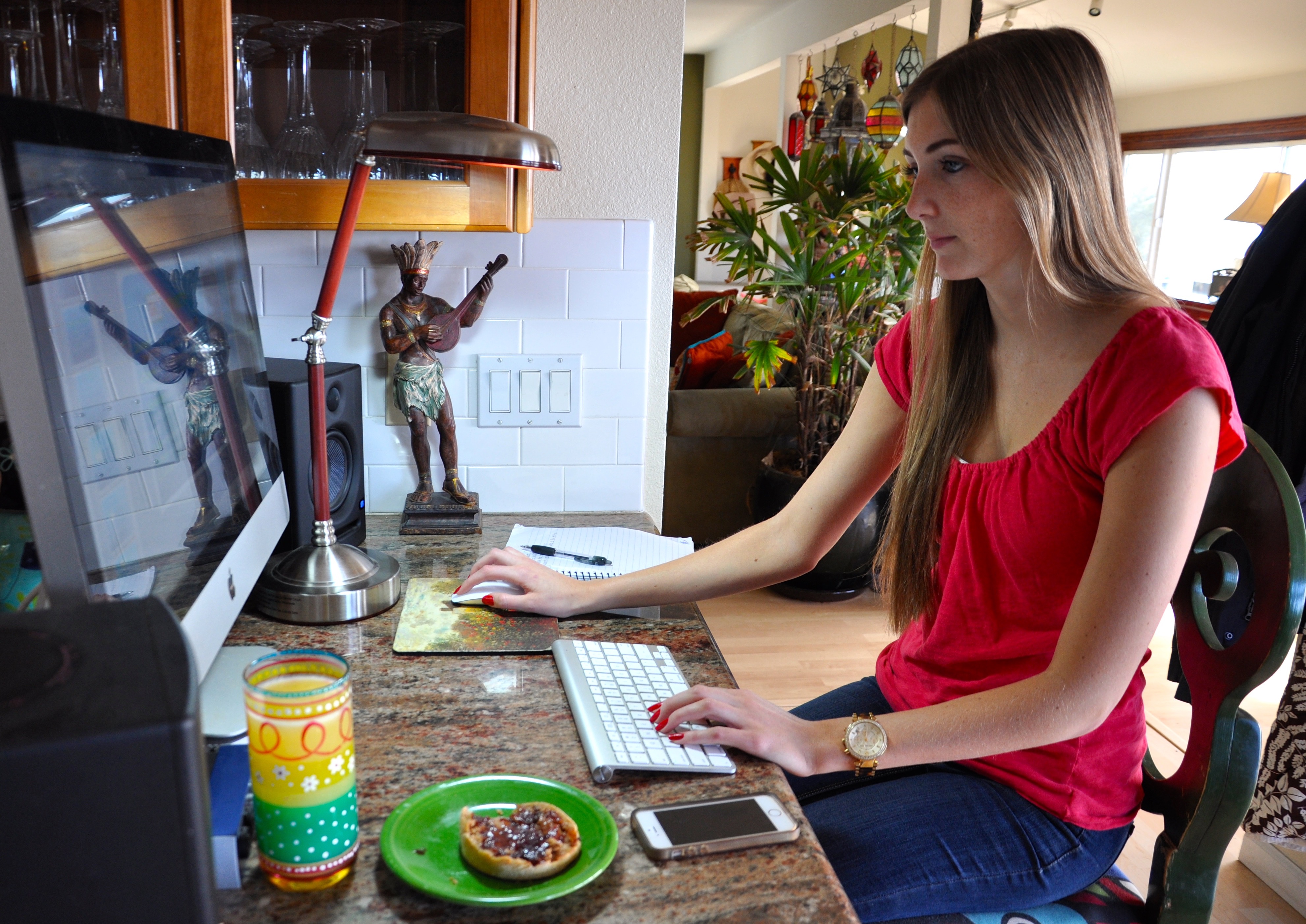School is well underway and grades are slipping. Kids are missing assignments, and parents are losing their minds. It doesn’t help that they stop studying every few minutes to answer texts or post on Snapchat. But when parents insist this is interfering, kids say they have to have their phones to work in groups and access information. Do they need to multitask, or do they just insist on playtime during work time? They can get so compulsive with social media due to persuasive design. Plus, constant exposure to the biohacks built into our screen activities burn us out. Autonomic overarousal from screens can translate to feelings of overwhelm, anxiety, and depression. Kids are tweeting and binging on YouTube videos more than running around outside or hanging out with friends and family. Wondering how to help your family balance screen time to optimize wellness and academic success? Here are some legit psychology research findings to inform your parenting decisions and arm you to win the argument that’s sure to follow.
Learning basics: Memory consolidation
Efficient memory storage is essential for good academic performance. Learning requires an opportunity for memories to effectively anchor or encode. Processing, or transforming short-term memories into long-term memories through its biochemical and electrical processes, is called consolidation.
Research with brain injury subjects along with recent advances in brain imaging demonstrate that different types of memories encode, consolidate, and store in different parts of the brain. For example, memorizing factual information (required to perform well in school tests) primarily involves the medial temporal lobe and the temporal cortex. Conscious or intentional learning is called explicit memory. Memorizing procedural information (like how to tie your shoes or drive a car) is stored in the areas of the brain that involve motor control. Learning without conscious awareness is called implicit memory. Emotional memories (like those that occur in traumatic situations) are stored in multiple brain areas including our emotional center, the amygdala.
Factors That Facilitate Learning
- Good self-care, brain health, and cognitive fitness is the foundation of learning engagement (Sleep, nutrition, exercise, and a positive mood)
- A distraction-free study environment
- Efforts toward mental engagement: attention and motivation
- A variety of learning formats (listening to a lecture, reading notes, writing notes, re-writing notes, watching videos, engaging in discussion, etc.)
- Memorizing material in a variety of study environments
- Making unique meaning of the material, such as generalizing and applying the concepts, especially with emotional connections
- Repetition
- Uninterrupted brain rest after each study session (mindfulness, meditation, time out in nature)_
Benefits of Screen Time
Screen use offers us learning benefits never before imagined.
With screens:
- We have unprecedented access to massive stores of information.
- We love to learn online. The biohacks built into our devices have us captured and motivated.
- Screen time is effective, economical, and ecological.
- With online communication, we have massive access, clarity, immediacy, and dissemination.
- Innovative formats, like project management and brain mapping systems, allow us vision and opportunities for crowdsourcing.
How Multitasking Interferes With or Contributes to Learning
Multitasking refers to working with multiple virtual and nonvirtual programs simultaneously. For example, video conferencing with your boyfriend while listening to the radio, doing homework, and responding to texts and Snapchat notifications. The brain simply isn’t built with multiple mental pipelines engaged. Although we can attend to several things at once, this can only happen efficiently if the multiple tasks use different cognitive resources, like classical music while doing math homework. If the tasks compete for the same cognitive resources, performance declines.
If your tasks are simultaneously competing for resources, here are the impacts on your learning:
- Toggling between tasks burns valuable time and energy, leaving the multitasker feeling irritable and fatigued.
- The brain simply isn’t wired to process several data streams at once. Deterioration in performance due to multitasking is called response cost.
- By frequently disengaging from one task and engaging with another, we rapidly burn up oxygenated glucose in the prefrontal cortex and the striatum; the same fuel we need to get through the task in the first place! This depletion of brain nutrients leaves us feeling foggy and fatigued. Some call this state mental brownout.
- When we are experiencing mental brownout, we move slower, have more trouble making decisions, and become more impulsive, anxious, aggressive, and depressed. That means that, in the big picture, the multitasker is teaching herself that learning is punishing. No bueno.
- Research demonstrates that watching television while doing homework leads to the wrong type of memory encoding necessary for good testing performance. More specifically, if your children study while watching TV, they will encode that information as procedural data rather than factual data. Encoding in the wrong brain region makes fact retrieval at test time more difficult.
- Academic performance declines on average by half of a letter grade when multitasking. The longer and more frequent the distractions, the more the performance decline.
- Deterioration of performance is worse if both tasks use the same cognitive resources (e.g., both explicit language tasks like reading and listening to song lyrics).
- Habitual multitasking leads to skill deterioration.
- The more students multitask, the more their brain structures change to adapt to inefficient learning styles. For instance, with practice, multitaskers get better at rapidly toggling between tasks (as if they’ve forged a wider mental pipeline). However, students who are frequently interrupted by screen media notifications eventually lose their ability to filter out or discriminate between tasks that facilitate learning from those that interfere with learning; all tasks are eventually perceived as having equal priority. Goodbye organization and triage skills.
- Once lost, getting good learning skills back is much harder than losing them in the first place. It’s kind of like “unseeing” something…
- People are terrible at recognizing that multitasking is interfering with learning. They’ll insist they’re doing better when they really aren’t.
- Research demonstrates that students consistently underestimate the costs of multitasking. So even if your kids insist that they know exactly what they’re doing, they don’t!
- There is an exception to this finding, however. Two percent of the population has been found to be supertaskers. Unlike the rest of us, these lucky learners can multitask efficiently without experiencing the negative side effects. I think I’m a supertasker! But because I suck at recognizing response cost like everybody else, there’s a 98% chance I’m delusional.
How to Optimize Learning Performance
- Allow your children to have input and negotiate sensible GetKidsInternetSafe (GKIS) guidelines like those found in our free Connected Family Agreement
- Stage the learning environment to be optimally effective like I blueprint in my GKIS Connected Family Online Course. Easy setup with long-lasting benefits.
- Model good habits and teach them what you’ve learned in this article.
- Teach your children to assess each situation to see if the tasks compete for cognitive resources. The best learners make sensible adaptations over time.
- If your children are searching for online tasks that will enrich their learning, like finding a video to supplement lecture notes or playing games to apply spelling words, by all means, encourage that behavior! Offer it as the dessert (practice activities) after the main course (memory consolidation).
- Develop an online toolkit that allows you to filter, monitor, and manage online tasks like our Screen Safety Toolkit. Kids simply don’t have cognitive resources to ignore the compelling features of screen time that are designed to biohack their brains at the expense of everything else.
- Not only do we offer free and third-party programs to help, but I also offer my psychological strategies that are family- and time-tested to work.
- For example, make homework time a GKIS Blackout Situation. Schedule them into screen device parental controls. Of course, a one-time solution won’t typically solve the problem. You’ll have to monitor and consistently check compliance.
- Teach them to work before play. Require them to complete their homework before screen time entertainment. Pulling children off-screen media once they’re engaged is a fight. Not only will their brain fuel be depleted, but they’ll be in withdrawal from the dopamine hits to their brains’ pleasure center. Why set them (and yourself) up for that?
- Teach them to schedule in a 30-minute break betweenhomework completion and screen turn-on time. Otherwise, your kids will recklessly rush to get to their fun, and grades will decline.
- Learn from the supertaskers.
- Expert learners limit multitasking time and refuel with healthy emotional and cognitive strategies, like maintaining a good attitude (cognitive restructuring) and practicing mindfulness, imagery, and meditation. That means healthy life activities outside of school are as important to brain fitness as maintaining healthy learning habits.
As an educator, I think fostering the love of learning is the best thing we can do with our kids. That means helping them achieve healthy life balances on- and off-screen.
I’m the mom psychologist who will help you GetYourKidsInternetSafe.
Onward to More Awesome Parenting,
Tracy S. Bennett, Ph.D.
Mom, Clinical Psychologist, CSUCI Adjunct Faculty
GetKidsInternetSafe.com



